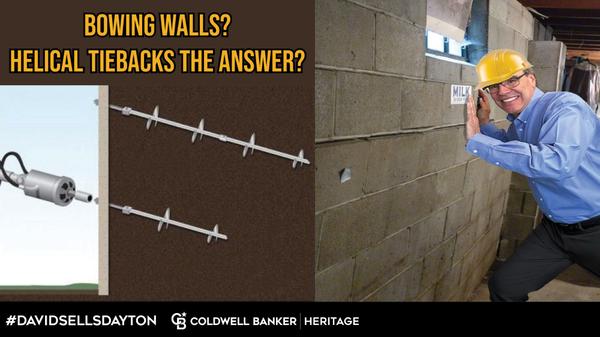
What is Knob and Tube Wiring?
In homes built from the late 1800s to the 1940s knob and tube was common practice for energizing a home. It’s easy to identify, just look for white colored porcelain cylinders (tubes) in floor joists and studs with a single wire running through them and porcelain posts (knobs) about 2 inches high supporting each wire. These ceramic pieces kept the wires from coming in direct contact with framing and being suspended allowed them to stay cool. There was no 3rd ground wire like today and the hot and neutral wires were kept about 10 inches apart for safety. If your home was built prior to the 1940s and the electrical system has not been completely replaced you may still have some knob and tube wiring left in the attic, walls or basement. I commonly still see it in use today in the Dayton area even after the electrical system has been updated. There are often some branch circuits that were missed and remain knob and tube - especially when hidden inside the wall cavity. Home inspectors always flag it and your insurance agent won’t like to hear about knob and tube in the house. Be careful not to bury it in insulation as it needs to remain uncovered and untouched. I’m always happy to discuss the systems within your house to prepare you for an easier home sale. More Home Inspection Videos

Are Tankless Water Heaters Worth It?
First off, let’s define what a tankless water heater is. Basically, it heats your water on demand - only as you need it. Unlike the traditional water heater there is no 40 or 50 or even larger tank of water sitting there constantly using energy to keep the water at temperature. The tankless fires up when you open the hot side of the sink or shower and shuts down when you close the valve. You can literally fill a swimming pool with hot water without running out! So, why doesn’t every house have one? They do require yearly maintenance for mineral buildup, which turns some people off. Of course, your traditional water heater is supposed to get maintenance too but no one seems to do it! If you don’t have gas in your home you would have to get an electric unit but they typically require an expensive upgrade to your electrical service. Tankless versions can also be overloaded and unable to keep up if there are multiple demands for water at the same time. In the end, they are more efficient. I’ve seen stats quoted of $25 to $104 dollars per year in energy savings from a tankless. However, I don’t think that’s enough in most people’s eyes to justify the added maintenance and make the switch. I’m always available when real estate related questions come up - so reach out any time!

Water Heater Expansion Tank
During showings I’m often asked, ‘What is this “thing” attached to the water heater?’ This ‘thing’ is known as an expansion tank. It helps to reduce the pressure on your water supply lines. If the pressure gets too great it can cause water to seep past the many valves in your plumbing system. There are the obvious valves at the kitchen and bathroom sinks but don’t forget, you have other valves such as those in your washing machine, outside spigots, toilet tanks, utility tubs, water heater pressure relief valves, etc. Aside from the valves there’s no need to subject the pipe and all the fittings to extra pressure. When water gets hot it naturally expands. This is where the added pressure comes from. The expansion tank has a bladder in it that will expand and make room for the greater volume of the hot water. Think of it as a balloon taking up about half of the space inside the tank. I’m always available to help with real estate questions that come to mind! More Home Inspection Videos
Categories
Recent Posts










